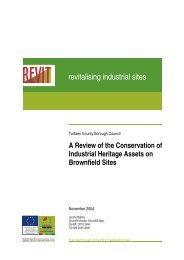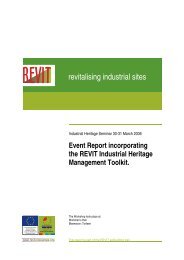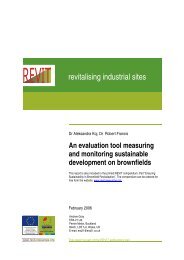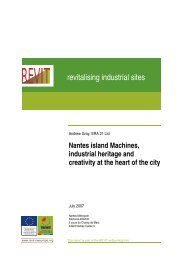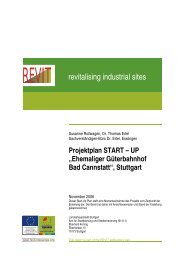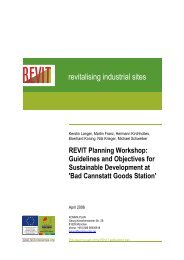STAKEHOLDER ENGAGEMENT - A TOOLKIT - REVIT
STAKEHOLDER ENGAGEMENT - A TOOLKIT - REVIT
STAKEHOLDER ENGAGEMENT - A TOOLKIT - REVIT
Create successful ePaper yourself
Turn your PDF publications into a flip-book with our unique Google optimized e-Paper software.
Institutional Buy-In/<br />
Response<br />
One of the core issues affecting the success of any Stakeholder Engagement<br />
process is the need to understand the wider system into which the participatory<br />
process fits. Whether it is a local council, private sector corporation or development<br />
agency, it is essential that the link is made explicit between the participatory<br />
process and the location of the decision that will affect future action (especially if<br />
the final decision is taken outside the participatory process). This entails planning<br />
for how the institutional response to the outputs and outcomes of the participatory<br />
process will be managed.<br />
Gaining institutional support for the process (be it corporate, developer or public<br />
sector buy-in) is often the single most important ingredient to ensuring that the<br />
outcomes of the engagement process are realised.<br />
The nature of the system and processes in which decisions are<br />
made, are an important consideration in determining which<br />
outputs and outcomes should be sought (for the engagement<br />
process) and will also affect the choice of participatory methods<br />
used.<br />
Clarifying the process in order to gain institutional support (and<br />
response) is vitally important because:<br />
• It establishes a commitment to change from the outset by<br />
recognising that some response will need to be made<br />
• It ensures that mechanisms are in place to deal with the outputs<br />
that come from the participatory process, and ensures that<br />
these outputs can be dealt with effectively and within a given<br />
timescale<br />
• It allows those running the process to explain to participants<br />
exactly what will be done with their effort, how the process will<br />
be managed and how its outcomes will affect/change things<br />
• It helps clarify what is and is not discussed (no point discussing<br />
things that really cannot be changed)<br />
• It helps clarify the roles of the different participants, as it<br />
clarifies what is expected of them all at different stages of the<br />
process.<br />
Institutional support for the engagement process should be sought as early as<br />
possible.<br />
However, decision-makers will usually require background information upon<br />
which to base their decision to support the process or not. The “scoping process”<br />
in which the purpose, scope, context, desired outcomes and stakeholder<br />
identification of the engagement process are defined, would meet this<br />
requirement.<br />
(This is why, “obtaining institutional support” is placed after the Scoping Process<br />
but as an ongoing process in the Engagement Plan on the engagement process<br />
flow chart, although the process needs to be continually adaptive).<br />
stakeholder engagement<br />
t o o l k i t<br />
institutional buy-in/response



